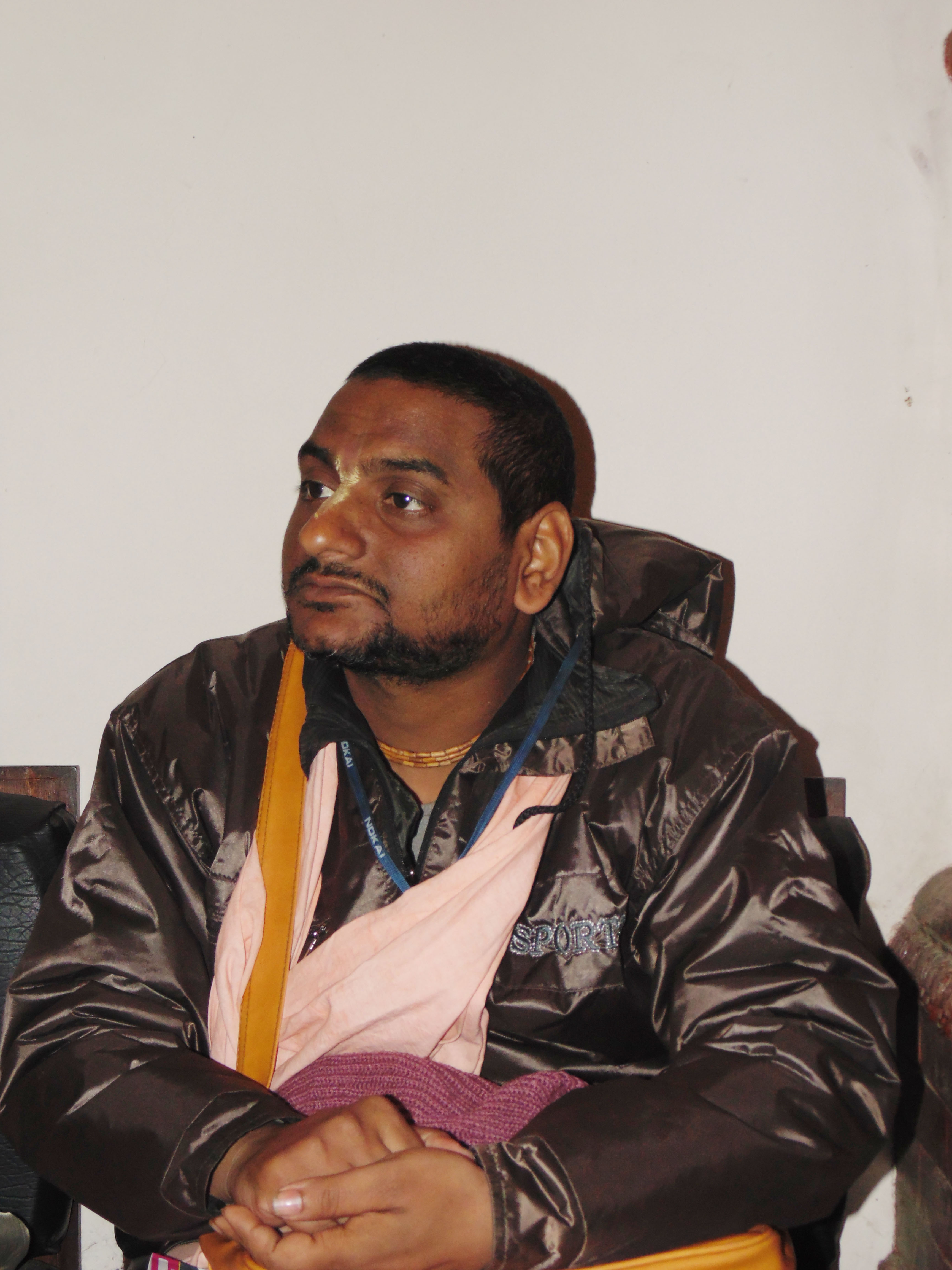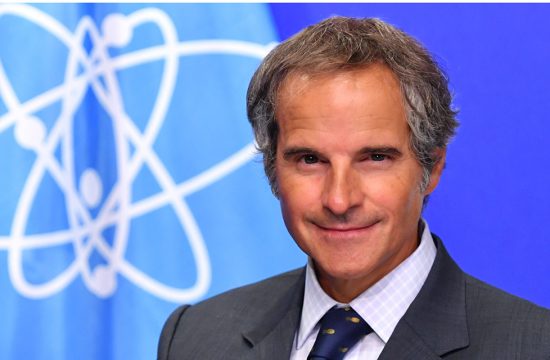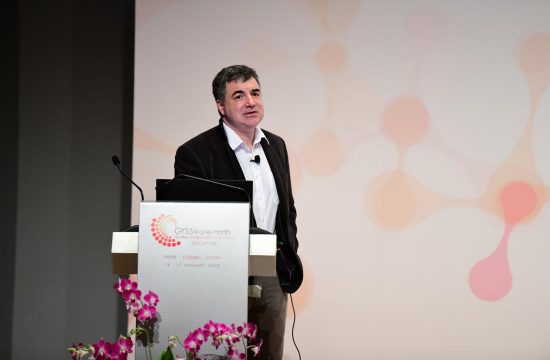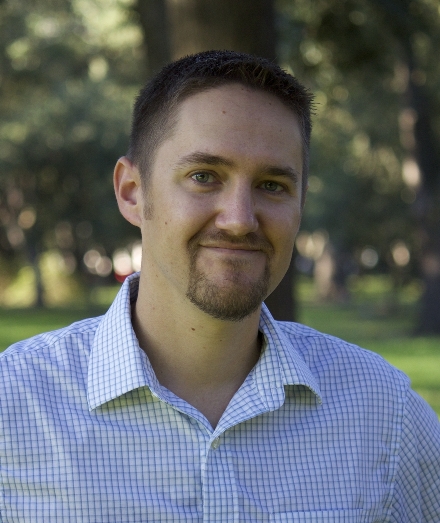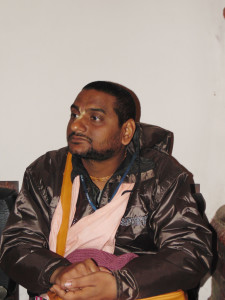 Bhakti Niskam Shanta, Ph.D. graduated in Mechanical Engineering from Utkal University in the year 2000. He did his master’s degree from Mechanical Engineering Department of Indian Institute of Technology, Guwahati, on Fluid and Thermal Science, in the year 2003. He obtained his Ph.D. on Coastal Hydrodynamics, from Ocean Engineering Department of Indian Institute of Technology, Kharagpur, in the year 2008. He worked as an invited Scientist in Korea Ocean Research and Development Center from May 2007 to May 2008. He has published numerous technical papers in international/national journals and conferences. During his Ph.D. he met his Spiritual Master His Divine Grace Srila Bhaktisvarupa Damodara Goswami Maharaja (Dr. T.D. Singh) and he thereby became inspired to carry out his future works on the most fundamental topics in science such as ‘Origin of Matter and Life’, ‘Origin of Universe’, and ‘Consciousness’. In the year 2011 he had received the tridandi sanyas initiation from Srila Bhakti Nirmal Acharya Maharaja, the dear most disciple and successor of Srila Bhakti Sundar Govinda Dev-Goswami Maharaja. The author is now serving actively in Sri Chaitanya Saraswat Institute, under the able and expert guidance of his siksha Gurudev Sripad Bhakti Madhava Puri Maharaja, Ph.D. to carry forward the vision and direction, which he has obtained from his spiritual master His Divine Grace Srila Bhaktisvarupa Damodara Goswami Maharaja (Dr. T.D. Singh). On that scenario, Shanta, General Secretary of Sri Chaitanya Saraswat Institute of Spiritual Culture & Science-Siliguri, West Bangal India are organized “Science and Scientist-2015” in Nepal. Meanwhile, Laxman Dangol, Editor and Kiran Adhikari, Reporter from RevoScience Monthly recorded an exclusive interview with him.
Bhakti Niskam Shanta, Ph.D. graduated in Mechanical Engineering from Utkal University in the year 2000. He did his master’s degree from Mechanical Engineering Department of Indian Institute of Technology, Guwahati, on Fluid and Thermal Science, in the year 2003. He obtained his Ph.D. on Coastal Hydrodynamics, from Ocean Engineering Department of Indian Institute of Technology, Kharagpur, in the year 2008. He worked as an invited Scientist in Korea Ocean Research and Development Center from May 2007 to May 2008. He has published numerous technical papers in international/national journals and conferences. During his Ph.D. he met his Spiritual Master His Divine Grace Srila Bhaktisvarupa Damodara Goswami Maharaja (Dr. T.D. Singh) and he thereby became inspired to carry out his future works on the most fundamental topics in science such as ‘Origin of Matter and Life’, ‘Origin of Universe’, and ‘Consciousness’. In the year 2011 he had received the tridandi sanyas initiation from Srila Bhakti Nirmal Acharya Maharaja, the dear most disciple and successor of Srila Bhakti Sundar Govinda Dev-Goswami Maharaja. The author is now serving actively in Sri Chaitanya Saraswat Institute, under the able and expert guidance of his siksha Gurudev Sripad Bhakti Madhava Puri Maharaja, Ph.D. to carry forward the vision and direction, which he has obtained from his spiritual master His Divine Grace Srila Bhaktisvarupa Damodara Goswami Maharaja (Dr. T.D. Singh). On that scenario, Shanta, General Secretary of Sri Chaitanya Saraswat Institute of Spiritual Culture & Science-Siliguri, West Bangal India are organized “Science and Scientist-2015” in Nepal. Meanwhile, Laxman Dangol, Editor and Kiran Adhikari, Reporter from RevoScience Monthly recorded an exclusive interview with him.
What is your topic of discussion today at Nepal Academy of Science?
I am going to discuss on topic- “Dissecting Darwinism in abiology” and “Science beyond Reductionism and Dogmas”. The term biology is of Greek origin meaning the study of life. On the other hand, chemistry is the science of matter, which deals with matter and its properties, structure, composition, behavior, reactions, interactions and the changes it undergoes. The theory of abiogenesis maintains that chemistry made a transition to biology in a primordial soup. To keep the naturalistic ‘inanimate molecules to human life’ evolution ideology intact, scientists must assemble billions of links to bridge the gap between the inanimate chemicals that existed in the primordial soup and anatomically modern humans. However, scientists continually fail to demonstrate any mechanism that would establish the transition of chemistry to biology. This reductionistic ideology has always failed to answer two simple questions: (1) What is the minimum number of parts that are essential for a living organism to survive? (2) By what mechanism do these parts get assembled together? Darwin’s “warm little pond” idea is only a wishful thinking and it has no empirical basis. Reductionistic analysis is only a pretension to study life because, in actuality, such research only deals with the study of molecular matter that is devoid of life. As we know very well,
“an organism is something which the scientific method cannot deal with; it is a hard, round, smooth nut, which experimental analysis can neither crack nor lever open at any point. As soon as a hole is made in it, it explodes like a Prince Rupert drop and vanishes away.”[1]
To teach that Man is simply an enclosed membrane of chemicals affects how people think about themselves as spiritual beings, and thus it influences the way they think about such concerns as abortion, euthanasia, bioethics in research and medicine, cloning, genetic modification of food, animal rights, etc. Our attitude is shaped by the way our education has conditioned us to think about the world. Many young people have confessed that they became atheists due to the teachings of the theory of evolution – even those who were formerly theists. This produces a loss of faith in religion, which comes with a whole tradition of moral teachings. Thus materialism in science does lead to moral degradation. Yet the scientific method itself is not applicable only to metaphysics of materialism.
Traditionally, in both Eastern and Western cultures, school systems were founded on a religious basis, from which different curricula were developed. The main reasons people pursued education and attended schools were to satisfy the spiritual quest – athato brahma jijnasa (Vedanta-sutra (1.1.1)) to fulfill their longing for spiritual development, self-determination, or liberation (moksha) from ignorance and the passions of mindless sense gratification, without a merely livelihood-based motivation for doing so. But the prime focus of modern education is not so much learning but to increase one’s earning power – to acquire necessary knowledge about basic interpersonal communication, literacy skills, and science for the sake of making a livelihood for themselves. The goal of education is not only to produce technicians, academicians, scientists but it should also help us to become good human being. How one can become good human being and develop qualities like humility, tolerance, compassion, free from anger and so on, is not addressed in our modern education. To address all these topics modern education must include the teachings of‘Science of the Soul’ and ‘Science of God’ as elaborately discussed by Supreme Lord Sri Krishna in Bhagavad-Gita.
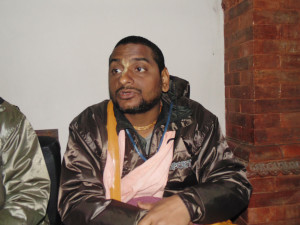 Is the atheistically founded modern education is harmful to humanity?
Is the atheistically founded modern education is harmful to humanity?
Sun and darkness cannot stay together. Wherever there is Sun there is no darkness and wherever there is darkness there is no Sun. Similarly ignorance and wisdom cannot go together. First we have to know the root of the problems that our society is witnessing and then we can find the solution. If we can cure the root of all the problems then we can have a lasting solution. For more than hundred and fifty years, on the name of biology, in many research institutes several scientists have already spent whole of their lives to find the scientific evidence for abiogenesis and Darwinian view of biodiversity. On the name of scientific research a lot of public money is also spent in those endeavors. Yet, till date scientists could not find any evidence at all to scientifically substantiate these hypotheses. Rather the empirical evidence suggests the opposite. Central Dogma of Molecular Biology claimed that the two major functions of DNA sequences were to encode their own replication and the amino acid sequences in proteins. The encoded proteins would decide the natures of cells and organisms. This vision of the way DNA worked was translated into conventional evolutionary theory, and random mutations were considered as copying errors that changed the DNA sequence one base-pair at a time, and, as a result, changed protein sequences one amino acid at a time. This scheme was in line with the Neo-Darwinian view of gradual accidental change. Therefore, still now most of the studies in biology are DNA centric. However, all that has changed by the revolutionary findings in 21st century. Old biology wanted to explain everything in terms of DNA analysis. In reality what to talk about psychological behavior, even the simplest physiological functions cannot be understood by the knowledge of genome sequence. “Rather than DNA dictating our growth and biology, our lifestyle and environment direct the genome” says Nature[2] news in the article ‘What the double helix can’t tell you’. This article also states:
“So studying DNA cannot predict our looks and destiny. But surely it can pin down proteins – after all, isn’t protein-coding exactly what genes are for?
“In fact, a DNA sequence tells us remarkably little about the proteins that it encodes. “There are so many aspects of proteins that you can’t predict by having access to the genome sequence,” says cancer biologist Sam Hanash of the University of Michigan in Ann Arbor.”
Therefore, whether research alone on the chemicals (DNA, RNA, proteins and so on) in the body of a living organism can solve all the problems of life is very much doubtful. By studying the details of DNA sequence can we ever know and control the subjective nature (behavior – happiness, friendship, love, affection, anger and so on) of the living organism? When a living entity becomes happy, angry, compassionate and so on, certain chemicals may be released in the body but we cannot call those molecules as the cause of those subjective behaviors. In other words, there is no molecule within the cell or the body of the living organism that we can term as ‘anger molecule’, ‘friendship molecule’, ‘affection molecule’ and so on. Even though scientist is discovering all the science ‘molecular biology’, ‘genetics’, ‘quantum mechanics’ and so on, yet that science is unable to explain the scientist (his/her thinking, feeling and so on). Our annual conference series ‘Science and Scientist’ is to encourage a more rigorous scientific study towards understanding the scientist or the personality of an individual.
Despite the fact that we do not have any empirical evidence to support abiogenesis (material origin of life) and evolution theory in the line of Darwinian thinking (bodily evolution), these two hypothesis have been taught in most universities and school systems. What to talk about plants and animals, these ideologies do not even allow us to develop any respect for our teachers, parents, elders and so on. From a very tender age innocent students are receiving the education that living organism is simply an enclosed membrane of chemicals and that our forefathers were apes. In this way atheistically founded modern education is launching a most fatal ideological attack against humanity in general. This is the root of all the problems.
What is the proof for the existence of the Soul?
Sometime people want a direct evidence of the ‘Soul’ to accept the wisdom of Bhagavad-Gita as scientific. However, first of all we must note that we do not need direct evidence to accept things in science and often the ideas in science are opposite to our direct sensory observations. Our direct sensory observation gives us the impression that earth is flat, the surface of the Earth is not spinning at over 1000 miles per hour and Sun rises and sets. On the other hand, modern science accepts that all of these direct sensory observations are wrong. There are terms in science that we cannot sense by our senses. We cannot taste, smell, touch, see and hear the entities like force, energy, electron, quarks, and so on. Scientists explain to us many such terms using inference and we accept them as scientific proof. When an apple falls down from a tree we infer that there is a gravitational force that pulled the apple down. We never ask for a direct observation of gravitational force itself.
As the presence of the sun can be inferred from the sunlight, similarly existence of the soul can also be understood from the presence of the different varieties of consciousness in various living organisms. Some Christians do not accept that animals have souls.[3] On the other hand, ancient Vedantic literature explains that wherever life is present, the soul is there within. Following a reductionistic approach a few biologists believe that body of a living organism is being held up by muscles, bones, tendons, and so on. However, despite the presence of muscles, bones, tendons, and so on, if someone becomes unconscious, the body will collapse on the ground. Hence, consciousness is a force within the body and only when we are conscious we will stand up and do those usual activities. The moment consciousness leaves, our body collapses. The concept of awareness (a consciousness activity) is a major interest for anaesthesiology and in this branch of science it is believed that unconsciousness brings forgetfulness of pain. However, when patients undergo deep ether anaesthesia, on recovery, some could not recall their surgery or the discussion, but some develop new psychological symptoms. In a while, after full recovery and under hypnosis, it is found that some patients recall of the spoken word, identify speech, and interpret meaning. In some cases it may lead to life-threatening psychological trauma.[4] Hence, in a living body it is not just the molecules, bones, tissues and so forth that are all in all. The body has a foundation upon consciousness. Consciousness is absolutely necessary for the body to be what it is and to function as it does. Twenty-first century biology also shows that even the smallest cells (unicellular organism like bacteria) are also conscious entities.[5] Summarizing different cellular process James A. Shapiro, Professor of Biochemistry and Molecular Biology at University of Chicago stated in his book “Evolution: A View from the 21st Century”[6] (reviews of this book can be found in several prominent journals):
“Without an elaborate sensory apparatus to pick up signals about chemicals in the environment (nutrients, poisons, signals emitted by other cells) or to keep track of intracellular events (DNA replication, organelle growth, oxidative damage), a cell’s opportunity to proliferate or contribute to whole-organism development would be severely restricted. Life requires cognition at all levels”.
Although we cannot directly perceive gravitational force but we can infer its presence from the event of falling of an apple. Similarly, although scientists cannot sensually perceive the soul, still they can infer its existence just from the presence of consciousness in all living entities.
According to shastra spirit possesses the qualities of sat, cit and ananda. All life exhibits these same qualities, it wants to maintain its life forever (sat) and is willing to engage in the struggle for existence until it is forced by the laws of material nature to succumb to physical death of the body. The fact that life goes on generation after generation for thousands or millions of years is not something we would expect in chemical or physical material processes. It is sentient or conscious (cit) and seeks knowledge in the human form. And all life seeks fulfillment (ananda) through nutrition, and various other forms according to the spiritual development of the various qualities of the soul within the different bodies. All these different symptoms give evidence for the existence of the spiritual soul, for they are certainly not the qualities of matter.
What is the difference between Matter and Life?
Using physics and chemistry, scientists try to explain the building of matter from atoms and molecules. The atomic relations are illustrated by chemistry. On the other hand, the lump of matter produced from an accumulation of atoms is explained by laws of physics. Based on this, biologists may argue that the whole matter of which a life form is composed does fit into the dominion of physics and chemistry. Based on this impression, they visualize that the protein–protein, protein–DNA or other bimolecular interactions within a living cell are merely the outcome of physical processes. However, anyone can understand the distinction between living (animate) objects and non-living (inanimate) objects through a simple observation of their movements. The trajectory of motion of an inanimate object like a satellite can be predicted in terms of laws of mechanics. However, the motion of an animate object like a bird cannot be understood with the same principle. This is because an animate object is self guided. To stress the same idea we would like to present one more example: Newton’s first law of motion is applicable to a marble (inanimate object), but it cannot be applied to a tortoise (animate object). The motion of inanimate objects is determined by an external force. We need an external force to move a marble at rest. On the other hand, animate objects display a self driven spontaneous movement. A tortoise at rest can decide when it wants to move and no law in physics can determine that decision. By a simple observation of an organisms’ growth, irritability, reproduction, metabolism, etc. one can make out remarkable distinctions between animate and inanimate objects. Hence, biologists must inquire about the deeper question: what automates the animate or living objects.
Throughout the history of modern science, repeated attempts to establish a set of essential and satisfactory properties for life — to come up with a basic definition of life — have been unsuccessful.[7],[8] It is necessary to recognize why such endeavors to come up with a distinctive and crucial definition of life have been failing. Over a period of more than one hundred and fifty years, biologists have attempted to discover the physical properties and chemical processes of the different biomolecules present within a living organism. Noble prize winner, Szent-Györgyi brilliantly presented the outcome of the mechanistic view of an organism[9]:
“As scientists attempt to understand a living system, they move down from dimension to dimension, from one level of complexity to the next lower level. I followed this course in my own studies. I went from anatomy to the study of tissues, then to electron microscopy and chemistry, and finally to quantum mechanics. This downward journey through the scale of dimensions has its irony, for in my search for the secret of life, I ended up with atoms and electrons, which have no life at all. Somewhere along the line life has run out through my fingers. So, in my old age, I am now retracing my steps, trying to fight my way back.”
Traditionally in both Eastern and Western philosophy life is understood as a cognitive or sentient principle. Sentience cannot be manufactured artificially by any noble mechanical and chemical arrangements of inanimate atoms and molecules. Ancient Eastern philosophy, based on the Vedantic or Bhagavat paradigm, provides the concept of ‘Organic Wholism’, as found, for example, in the invocation of Sri Isopanisad “om purnam adah purnam idam purnat purnam udacyate purnasya purnam adaya purnam evavasisyate–The ‘Organic Whole’ produces ‘organic wholes’. An ‘organic whole’ cannot arise from parts that have to be assembled. That process can only produce inorganic, mechanical machines or chemical processes, not living organisms.”[10] A similar conclusion was made by Rudolph Virchow in 1858, “omnis cellula e cellula” (“every cell comes from a cell”).[11] In 1864, Louis Pasteur also demonstrated that life cannot arise from non-life (abiogenesis is impossible) and with experimental evidence established the theory of biogenesis: Omne vivum ex vivo – life comes from life.
Moreover, zygote to adult embryonic development of every species also follows a fixed unique blueprint leading to the production of an adult organism of that particular species only. Driesch[12] explained this in a sequence of results where embryological growth progressed by the interactions of the nucleus and cytoplasm:
“Insofar as it contains a nucleus, every cell, during development, carries the totality of all primordia; insofar as it contains a specific cytoplasmic cell body, it is specifically enabled by this to respond to specific effects only. …When nuclear material is activated, then, under its guidance, the cytoplasm of its cell that had first influenced the nucleus is in turn changed, and thus the basis is established for a new elementary process, which itself is not only the result but also a cause.”
This spectacular realization of nuclear-cytoplasmic interaction and nuclear equivalence finally forced Driesch to reject the vision of a living organism as a physical machine. Examining natural history, researchers also reported that living organisms never evolved into different novel anatomical structures; rather they continually unaltered, even over the period of hundreds of millions of years. This non-changing aspect of an organism is known as stasis in the fossil record. Many similar observations in the literature establish that species preservation is a natural characteristic of life. Life’s ability to preserve its own species over the period of hundreds of millions of years (‘Stasis’ in the fossil record) offers a significant challenge to Darwinian gradualism. Living organisms exhibit many goal-oriented or teleological activities, which make them distinct from insentient mechanical and chemical systems.
Darwin’s Origin of Species utterly ignores these goal-driven activities of living organisms, insisting that natural selection is exclusively responsible for the gradual but steady appearance of more complicated organisms. This irrational obliteration of the role of teleology in the study of life and its evolution is the major deficiency of Darwinism.[13] Despite that, right from the mid-19th century to the last few decades of the 20th century, biology witnessed a complete dominance by Darwin’s mechanistic and insentient picture for sentient living organisms. We termed this incorrect representation of life as abiology and showed that several major conceptual changes have lead to the breakdown of Darwinism or abiology. Rejecting Darwinian abiology, 21st-century biologists are now forced by the evidence to reconsider ancient Vedantic wisdom as a realistic foundation for understanding life.
What is the better biological approach then?
A biological system is not a machine-like a gathering of superficially assembled parts. A serious attempt is very much essential towards a new comprehensive understanding of the concept of the biological system as a whole. In a biological system the participants are dedicated to the whole, and the whole too, survives in each of its participants. As I earlier mentioned many contemporary researchers have already started recognizing each organism as a sentient unit or organic whole. This can be understood as the scientific confirmation of the ancient Eastern Vedantic philosophical concept of atma, Aristotle’s concept of Soul and Hegel’s explanation of Concept. Vedantic scholars, Aristotle, Kant (using the argument of teleology) and Hegel all claimed that biological systems (organisms) are distinct from inanimate objects (mechanical and chemical systems). Purpose and meaning are inseparable aspects of life. We cannot expect those in dead molecules. We don’t give any moral and ethical importance to an accumulation of dead molecules, but such a consideration is a must to the life principle. Hence, abiogenesis is an insult to the life force. There are several ethical problems attached to abiogenesis. Scientific recognition of sentience in the organisms has seriously dented the reductionistic picture of the organism as a mere accumulation of biochemicals. Advanced scientific research is continuously providing an abundance of new scientific data. However, all of that has failed to provide any tangible elucidation as to what actually constitutes consciousness and what are its factual characteristics. Abiogenesis, Darwinism and post-Darwinism do not have sufficient tools to accommodate cognitive phenomena in a sentient biological system and hence they do not have very promising prospects. Therefore, both origin and evolution of life must be rewritten on the basis of sentience. Objective evolution is a misconception that biologists must overcome and should instead find the proper tools to explain the evolution from the realm of sentience.
How biology can properly understand life and its origin?
No matter how grand a scientific venture may be, it certainly cannot capture the entire scope of reality. Modern science cannot control cosmos, suns, planets, seasons, and so on and so forth. Hence, science is forced to confine itself to an insignificant fraction of complete reality. As Sir Isaac Newton said, “I seem to have been only like a boy playing on the sea-shore, and diverting myself in now and then finding a smoother pebble or a prettier shell than ordinary, whilst the great ocean of truth lay all undiscovered before me.” At times the scientific schemes are exceedingly fruitful and many concepts appear to be firmly established in science. However, as time progresses, and with the development of new information, the same science recognizes new phenomena, which often fail to accommodate the firmly established old concepts. In such situations a portion of the scientific world tries to powerfully, and sometimes emotionally, preserve their belief in the old concepts. However, the empirical observations compel science to embrace the truth in the face of all such antagonism. 21st Century biology is witnessing a movement of this nature, where the empirical evidence is forcing many prominent scientists to reject the old, widely used, Darwinism. Some biologists, engrossed in the old disposition of Darwinism or abiology, want to preserve it at any cost. In such attempts, often they cannot recognize the blinkers they enforce on themselves due to their idealistic obligations rather than empirical inevitabilities. However, we must recognize the fundamental strength of science as rightly stated by Taylor[14] in a News article:
“The fundamental strength of science is that it compels its practitioners to confront their own fallibility…Science is not always right – very far from it. What marks it out from other fields of human endeavor is that, because of its formalized humility, it’s always ready to correct itself when it makes a mistake.”
The participants in a biological system come into view or grow out of the germinal organism and reveal the manner in which the biological system as a whole relates to its environment. This establishes that life can only come from life. Moreover, evidently each species of life produces their unique biochemicals. The inanimate objects (dead chemicals) don’t display sentience. Sentience is a unique property observed only in biological systems (animated objects). This in turn establishes the fact that there must be an original sentient being from whom the life forms and their related matter have emerged. This is also a confirmation of the Vedantic conclusion depicted in the second aphorism of the Vedanta sutra and its commentary in the first verse of Srimad Bhagavatam: janmady asya yato ‘nvayad itaratas cartheshv abhijnah svarat – the origin of everything is “abhijnah svarat” – the unitary Supreme Cognizant Being Lord Sri Krishna. The interesting advancements in modern science are leading us towards an authentic scientific understanding of the reality of nature and origin of life. For the benefit of humanity, sincere scientifically minded scholars should overthrow the misconceived reductionistic ideology of deep rooted materialism, and should carry forward further studies on these purely scientific, rational explanatory viewpoints.
21st century biology teaches us that we should not inflict our ideas on nature; let nature reveal herself to us. Life and its evolution cannot be understood by imposing simplistic Darwinian mechanistic reductionism on sentient biological systems. Evidence is forcing biologists to go beyond physics and chemistry to properly comprehend the science of consciousness. We know that each species of life has its own unique gene regulatory network, such that from its initial stage to maturity the particular species develops in accord with processes unique to that species only. This developmental process is magical and cannot be understood without comprehending properly the science of organic whole. In the body of an organism there are different organs like heart, kindly, lungs and so on, which perform different functions to serve the function of the body as a whole. One organ does not try to become another. In the similar manner different living entities and also their environment are related to each other like an organic whole. Starting from an atom to universe everything in this cosmos is an organic whole. Biology conforms that life is extremely complex and cannot be understood by simplistic approaches that are commonly practiced in physics and chemistry. Scientific methods are only trying to find the causes from a finite perspective by following a reductionistic approach. However, as we have seen that evidence is forcing us to develop a systemic approach to properly comprehend the cause of all causes. In the verse 5.1 of Sri Brahma-samhita it is stated that: anadir adir govindah sarva-karana-karanam–The Supreme Absolute Krishna is the origin of all and He is the prime cause of all causes. A superficial study of the physics and chemistry of the body of a living organism will never give us complete knowledge about life. A sincere attitude and proper humility can only guide an individual towards the perfect knowledge.
“So sincerity—sincere hankering after the truth—is needed if we are to go further. And that is made of sukriti and the grace of the divine agents who, by their nature, are wandering through this cursed land to help others who may not even know they are being helped.” – Srila Bhakti Rakshak Sridhar Dev-Goswami Maharaja
References:
[1] Needhma, J. (1929). The skeptical biologist, London: Chatto & Windus, p. 82. [2] Refer: http://www.nature.com/news/2003/030421/full/news030421-7.html [3] Refer: http://www.bbc.co.uk/religion/religions/christianity/christianethics/animals_1.shtml [4] Levinson, B. W. (1965). States of awareness during anaesthesia. British J. Anaesthesia, Vol. 37, pp. 544-546. [5] Shapiro, J. A. (2007). Bacteria are small but not stupid: Cognition, natural genetic engineering and socio-bacteriology. Stud. Hist. Phil. Biol. & Biomed. Sci., Vol. 38, pp. 807-819. [6] Shapiro, J.A. (2011). Evolution: A view from the 21st century. Upper Saddle River, NJ: FT Press Science. [7] Popa, R. (2004). Between necessity and probability: Searching for the definition and origin of life. Springer-Verlag, ISBN: 3540204903. [8] Bedau, M. and Cleland, C. (2010). The nature of life: Classical and contemporary perspectives from philosophy and science. Cambridge University Press, ISBN: 9780521517751. [9] Gyorgy A. (1972). What is life? In The Physical Basis of Life. Del Mar, CA: CRM Books, p. 5. [10] Prabhupada, A.C.B.S. (1969). Sri Isopanisad. Bhaktivedanta Book Trust. [11] Tan, S.Y. and Brown, J. (2006). Rudolph Virchow (1821-1902): Pope of pathology. Singapore Med J, 47, pp. 567 – 578. [12] Driesch, H. (1894). Analytische Theorie de organischen Entwicklung. W. Engelmann, Leipzig. [13] Dupree, A.H. (1959). Asa Gray, 1810-1888.Cambridge, Mass.: The Belknap Press of Harvard University Press. [14] Taylor, M. (2012). Science is enforced humility. The Guardian. www.guardian.co.uk/science/blog/2012/nov/13/science-enforced-humility Accessed 12 January 2013
